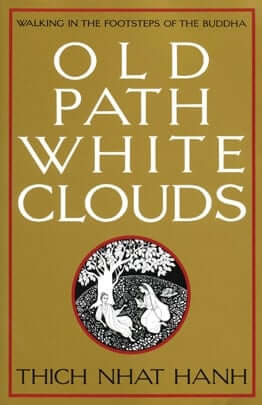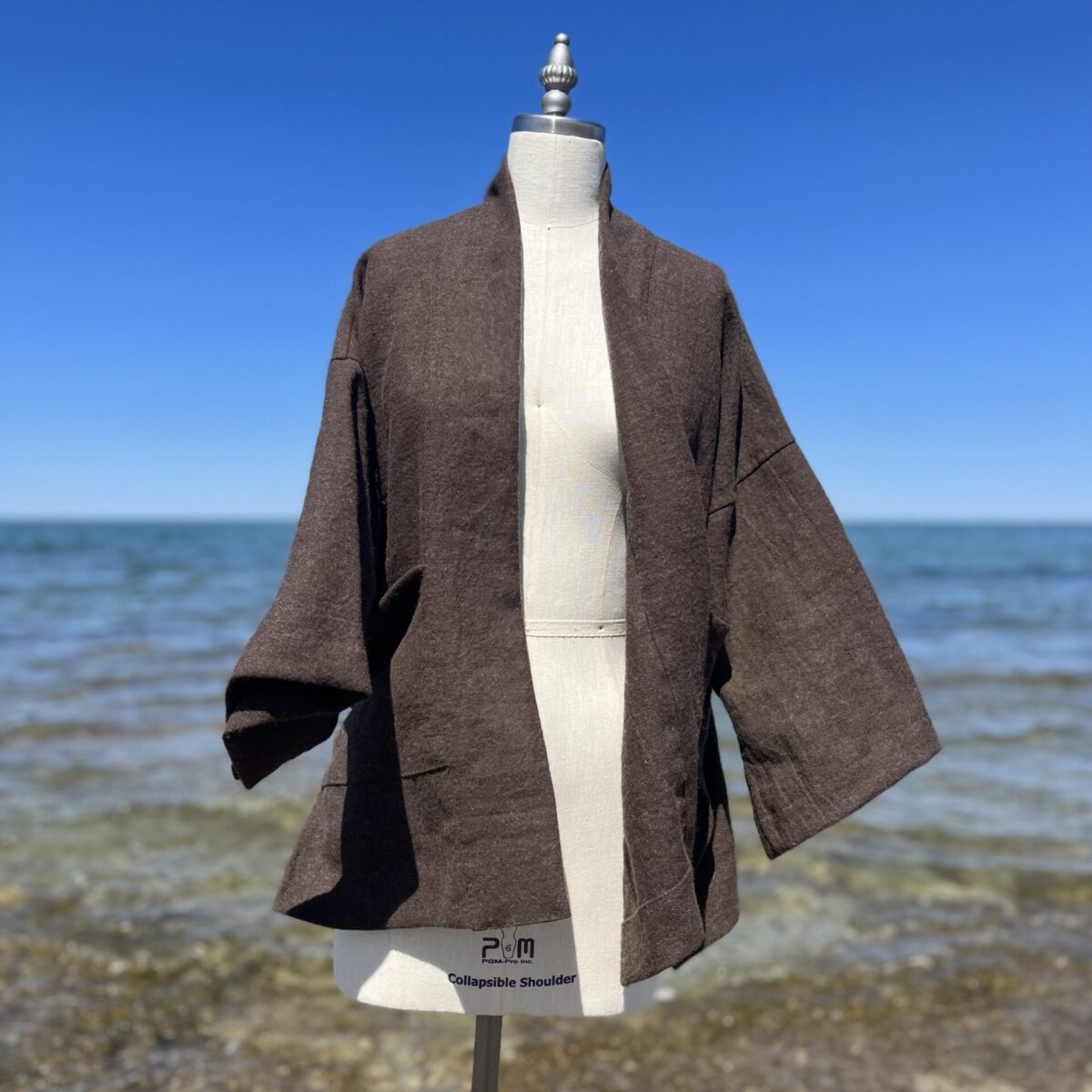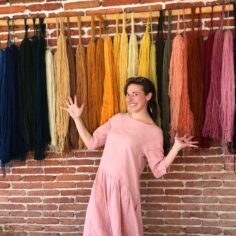An Order of Interbeing member shares about the interbeing, reverence for life, and meditation of crafting with natural materials.
By Sarah Manion on

In Old Path White Clouds, Thầy recounts the origin story of the Buddha’s patchwork robes. Overlooking a field of rice paddies, Buddha said to Ananda, “‘Ananda, how beautiful are the golden patches of rice that stretch to the horizon!
An Order of Interbeing member shares about the interbeing, reverence for life, and meditation of crafting with natural materials.
By Sarah Manion on

In Old Path White Clouds, Thầy recounts the origin story of the Buddha’s patchwork robes. Overlooking a field of rice paddies, Buddha said to Ananda, “‘Ananda, how beautiful are the golden patches of rice that stretch to the horizon! Wouldn’t it be nice to sew our robes in the same checkered pattern?’ Ananda said, ‘Lord, it is a wonderful idea. Sewing bhikkhus’ robes in the same pattern as rice fields would be lovely.’”
I have been creating things with my hands all of my life. When I first learned the story of the Buddha’s robes, I fell in love. I fell in love not only because the Buddha’s community, like me, apparently had a practice of sewing their own clothes, but because the Buddha showed me how mindfulness, meditation, and interbeing can be integrated, illuminated, reflected, and worn in everything we do. To me, this insight was as beautiful as those rice paddies must have been to the Buddha and Ananda.
When I became an aspirant to the Order of Interbeing, I knew that hand-sewing my own brown jacket would be my way of honoring the Buddha, the Dharma, the Sangha, and my commitment to this path.

Fabric of life
I see making as a form of engaged practice. Bringing materials together with needle and thread helps awaken wisdom in me: I am a complex collection of non-human fibers and filaments woven together to form the fabric of human experience. In my mind, the fabric of my work is the fabric of all life; everything integrated, everything interwoven. Looking at craft through the eyes of interbeing makes my work feel alive, the process of selecting the material for my brown jacket an act of reverence for life. As I flip through all the brown fabrics, I take a moment to look deeply into the origins of these materials. Where did they come from? How did their creation impact the people, places, and animals of which they were made? What stories do they tell?
My choice is a soft linen-wool that hangs on my arm like water. Touching the cloth for the first time, I consider the linen-ness of it: flax that grew in a field under sunny skies before the harvest. A plant with roots deep in soil that produced threads sturdy enough to yield fabric for working garments and pliable enough to flow gently around ankles and calves on a summer’s walk through the woods. I touch the fabric again and feel the softness of wool interwoven with linen. I like the mix of plant and animal fiber in this cloth. It reminds me of the enduring interrelationship between land and life, between the human and the more-than-human. And it doesn’t hurt that I have a particular fondness for sheep! The integration of wool with linen means my jacket will be pliable, warm, and joyful—qualities I try to reflect in my practice.
Material practice
The Irish poet John O’Donohue said, “Every time you’re creative, you’re on holy ground because you’re actively deepening, extending, and realizing creation.”1 I love working with the closeness and immediacy of my own hands. I like the meditative dance that unfolds across a piece of fabric when finger, needle, breath, and eyes move as one across the stage of cloth. It’s an embodied practice that helps me to release into the wonder of being. When I’m sewing, it’s easier for me to feel deeply how the body and mind are in perfect oneness. Each stitch is alive as an expression of creation. I find it delightful.
I am a slow maker. Not only because I believe that making something beautiful deserves to take time, but also because my everyday life is filled to the brim with busyness, and so sewing is a refuge. Each day, I spend a few moments with my brown-jacket-in-progress. I make a cup of tea and invite my busy mind to sit with my body a while. Once I am settled, I pick up my sewing and allow myself to release into the order and progression of one stitch after another. If I listen closely, I can hear the moving song of the stitch gatha: Breathing in, needle meets fabric / Breathing out, stitching.
Deeply worn
Much has been written about what it means to wear the brown jacket of the Order of Interbeing. Over the course of my aspirancy, I found I needed to craft my own relationship to the brown jacket. Thầy encourages us to create a life that supports our practice, and this has been a profound invitation for me. For me, this means exploring the origins of what brings me real peace. The practice of making helps support my spiritual practice by cultivating the energy of mindfulness and bringing me joy. It is a pattern of everyday practice that fits me.
When I wear this brown jacket, I will be putting on all the teachers and all the communities that have been woven into my life along this path. Each time I slip my arms into this coat, I will inhabit all the moments of connection experienced in sewing the garment; I will smile, knowing that I have this practice, that I am a part of this community. I will smile at all of the non-brown-jacket elements woven into the folds and creases of this one garment that clothe me in joyful, interwoven interbeing. As the African scholar Bayo Akomolafe writes, “We are not a crease in the fabric of things, we are the fabric of things.”2
Craft and making is one way I have translated this practice into the language of my life. It is a personal act of reverence and gratitude for all the beings, elements, and conditions that have manifested to create this beautiful garment. I aspire to wear it fully and joyfully for myself and the world each day.
1 John O’Donohue, 2012, “Imagination as the Path of the Spirit,” YouTube. https://www.youtube.com/watch?v=F0bg7lNeKY4
2 Bayo Akomolafe, 2020, “Don’t Be So Careful,” Radical Discipleship. https://radicaldiscipleship.net/tag/bayo-akomolafe/page/2/


